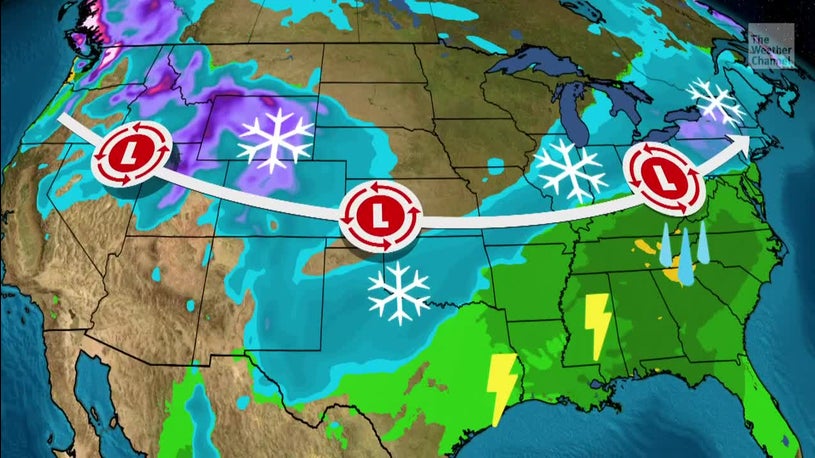
Groundhog Day is fun, but any meteorologist will tell you you're wise to avoid putting any real stock in a prognostication made by a groundhog on the rest of winter.
We get it, though. When February arrives, some may be increasingly stir-crazy for spring. Some of you may have dealt with snow since October. On the other hand, others may want to hit the slopes as long into the spring as possible.
Using National Weather Service 30-year average data, we lay out how much of the season's snow and cold is typically left after Groundhog Day, for 25 cities across the U.S.
Quite a Bit of Snow Left
In each of the 25 cities we examined from Alaska and the West, to the Midwest and Northeast, anywhere from 25 to 50 percent of the season's average snow falls after Groundhog Day.
Interestingly enough, the cities with the highest percentage of season snowfall after Groundhog Day are New York City and Philadelphia, both typically picking up half of their season's snow after Feb. 2.
This is in large part due to the propensity for major Northeast snowstorms in February and March.
Eighteen of the cities we examined typically pick up another foot of snow after Groundhog Day. Anchorage, Billings, Buffalo and Cleveland pick up another 2 feet of snow or more of snow.
Incredibly, in both Marquette, Michigan, and Tahoe City, in California's Sierra Nevada, another 7 feet of snow is typical after Feb. 2.
Most northern cities have to go into April in an average year before feeling safe to store the shovel or snowthrower for the season. On the other hand for much of the Northeast urban corridor and parts of the Lower Midwest, snow is typically done by the end of March.
Average Post-Groundhog Day Share of Season Snow, Last Date of Measurable Snow
(Data: NOAA/NWS)When the Cold Finally Exits
Even if the snow finally shuts off for the season in spring, cold snaps can still be frustrating.
Only three of the cities we examined typically see their last freeze of the season in March.
Otherwise, most cities outside the mountain West or not near the U.S.-Canadian border have to go into April to see their last freeze.
This translates to at least 30 days after Groundhog Day of morning lows at least dipping to the freezing mark in Philadelphia and St. Louis, at least 40 such freezing mornings in Omaha and Pittsburgh, 50 such days in Chicago and Spokane, and over 60 freezing mornings after Feb. 2 in Denver, Fargo, and Flagstaff.
In some parts of the far northern U.S. or mountain West, a freeze is possible much of the spring.
Average Post-Groundhog Day Morning Freezes, Last Date of Spring Freeze
(Data: NOAA/NWS)As we've seen, even a pessimistic "six more weeks of winter" forecast from your local groundhog doesn't typically capture the propensity for winter weather to lag into spring.
The Weather Company’s primary journalistic mission is to report on breaking weather news, the environment and the importance of science to our lives. This story does not necessarily represent the position of our parent company, IBM.
"typical" - Google News
February 03, 2020 at 12:09AM
https://ift.tt/3b7g8cE
How Much Snow and Cold is Typical After Groundhog Day? - The Weather Channel
"typical" - Google News
https://ift.tt/2MUAcon
Shoes Man Tutorial
Pos News Update
Meme Update
Korean Entertainment News
Japan News Update
Bagikan Berita Ini














0 Response to "How Much Snow and Cold is Typical After Groundhog Day? - The Weather Channel"
Post a Comment